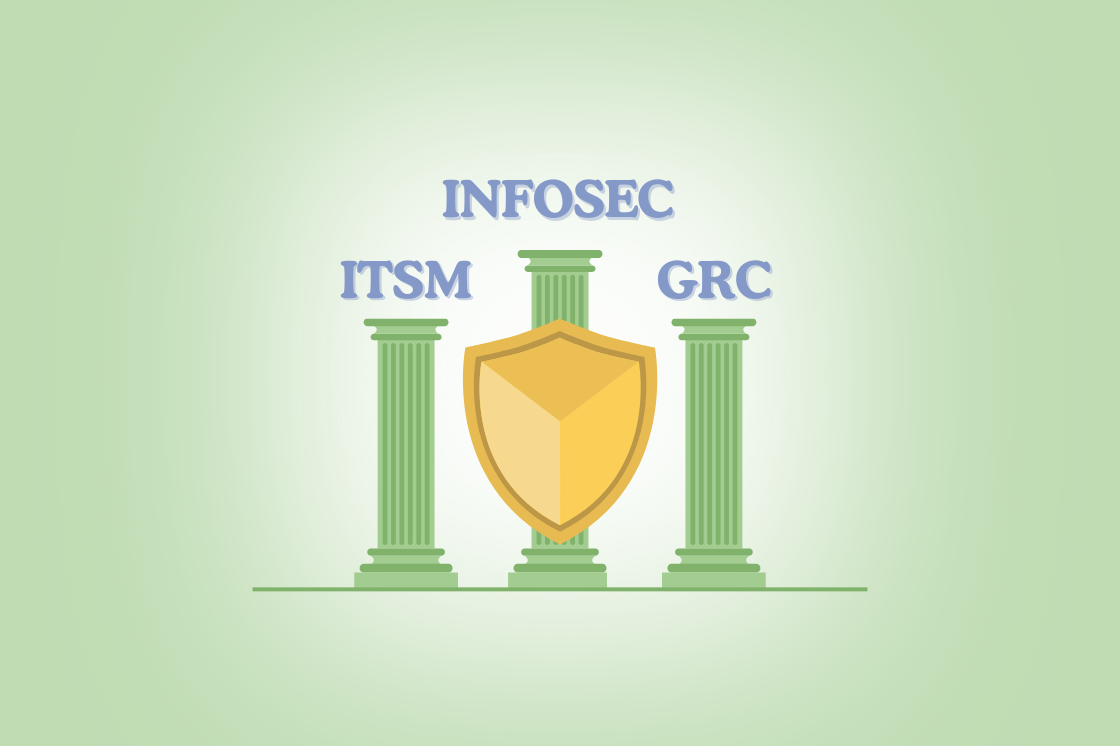Three Things for a Successful ITSM Implementation.
Implementing an IT Service Management Program can be challenging for many organizations. To achieve success, it is crucial to focus on three key elements: People, Processes, and Technology.
IT Service Management (ITSM) is a method used by information technology organizations to design, build, implement, operate, and improve services for their customers.
Implementing IT Service Management (ITSM) offers significant strategic benefits, but organizations often face challenges due to an imbalance among the people, processes, and technology involved in delivering ITSM services.
Many organizations make the mistake of assuming that simply installing a service management tool is equivalent to implementing an ITSM program.
However, true ITSM success can only be achieved when there is a balance between People, Process, and Technology.
Let's take a closer look at each of these factors to better understand their significance in ITSM implementation.
ITSM Team
Above all, ITSM is a human endeavor.
Your ITSM program can only succeed if everyone understands the objectives, their role within the program, and if everyone is aligned and working together towards the same goal.
This starts with establishing the right ITSM Team Structure. One of the most successful approaches we've seen is the Service Management Office (SMO).
The Service Management Office (SMO) is responsible for implementing, managing, governing, and improving IT service management (ITSM) processes and tools.
The team consists of Process Owners, Process Managers, Business Process Analysts, ITSM Architects, and ITSM Tool specialists. Having this team in place brings focus to your ITSM program and ensures you have the right skills in place.
In addition to establishing the right ITSM team, it's important to get the rest of the IT organization on board.
To achieve your goal, you may want to consider taking an Organizational Change Management (OCM) approach. OCM facilitates successful change implementation within your organization and is focused on:
- Ensuring that everyone understands the ITSM vision, goals, and objectives.
- Explaining the WIIFM (What's In It For Me) in terms that are relevant to each stakeholder group. For example, technical staff may be less concerned about cost savings and more interested in streamlining implementations.
- Engaging with individuals by actively listening to their suggestions and addressing their concerns, while also actively involving them in the implementation process.
- Striving for quick wins and celebrating success.
- Setting up the ITSM program for success through training, governance, and continual improvement.
To ensure the success of the IT Service Management program, it is crucial to gain the support and commitment of the leadership team.
You may need to explain the advantages of ITSM in a language that they are familiar with, such as increased productivity, reduced costs, enhanced reliability, and and the mitigation of risk through governance.
It's crucial for leadership to visibly support the program by attending meetings and helping address organizational resistance.
One way to establish executive sponsorship is by creating the Business Case for ITSM Best Practices. By presenting ITSM in business terms you will have a higher likelihood of obtaining sponsorship.
In summary, ITSM success depends on everyone understanding their role and objectives. Establish the right ITSM team structure, such as the Service Management Office (SMO), to manage and improve ITSM processes and tools. Implement an organizational change management approach to get the rest of the IT organization on board. Gain leadership support and commitment by explaining the advantages of ITSM and addressing organizational resistance.
ITSM Processes
Numerous companies encounter challenges when attempting to implement IT Service Management (ITSM), especially concerning process management.
Some people argue that processes are too bureaucratic, impeding agility and slowing down work. Additionally, some believe that their organization is unique and that process standards such as ITIL will not work for them.
But when implemented correctly, the opposite is true. Processes identify the flow of work in an organization, keeping everyone on the same page.
Well-mapped processes identify bottlenecks and streamline operations, increasing efficiency and saving money.
Adopting a process framework, such as ITIL, is a great way to accelerate the creation of your own processes.
ITSM frameworks are based on the culmative experience of many organizations and ITSM professionals. There is no reason you shouldn't be able to leverage them. The uniqueness comes down to process vs procedure.
While processes can be standardized, procedures need to be customized for your operations and tools.
Processes are also the foundation for process automation. It surprises me that some people think they can implement an ITSM platform without first identifying and mapping their processes.
Without spending time to identify and map the processes, how would one know what to automate?
Here are some other considerations in respect to your ITSM processes:
- Consider using established industry standards like ITIL, COBIT, ISO20000, IT4IT, or SIAM to improve your IT operations.
- Create clear standards for your process mapping and documentation
including the selection of a process mapping solution - Perform an ITSM process assessment to identify gaps prior to process design and implementation. Use the assessment to create an ITSM implementation roadmap
- Engage the organization in your process design efforts as you need their experience and input. Check out this webinar on the best practices for process design and documentation.
- Develop a repeatable approach for the management of your processes focused on roles, responsibilities, implementation, execution and reporting . Check out this article on The Art of Managing Processes.
- Establish a governance framework for your processes.
- Don't forget to make process improvement part of your ITSM program
Having well-defined and managed ITSM processes are essential for organizations to increase efficiency, streamline operations, and save money. Implementing ITSM processes requires clear documentation, engagement from the organization, a repeatable approach for process management, agovernance framework, and process improvement as part of the ITSM program.
ITSM Tools
ITSM tools bring your processes to life through automation. However too many organizations equate the ITSM tool with the ITSM program.
There are several things you need to consider as part of your ITSM tool implementation.
- Let your processes drive the implementation, not the other way around.
- One of the main reasons why ITSM tool implementations often fail is due to the lack of well-defined processes. Processes are essentially the blueprint for automation, as they identify the sequence of work and the hand-offs between roles. Without good process definitions, it is practically impossible to automate your processes. In such situations, you may end up with a "lift and shift" of your previous ITSM tool. This not only minimizes the ROI of your new tool but also renders your ITSM tool implementation ineffective. For more information, check out this webinar: ITSM Tool Implementation - Practical Advice for a Successful Project
- Related to process are the technical requirements of your implementation. This includes such things as process states, triggers, forms & field definitions, email notifications, and integrations with other tools. The best way to capture these requirements are through User Stories that are mapped to your process. For each step in the process capture a user story in business terms, then for each story capture the technical requirements for implementation. For more information, check out this webinar: User Story Mapping: A Process-Driven Approach
- Understand your requirements before selecting an ITSM tool
- It is important to review your current ITSM tool and identify any areas that may need improvement. Involve your stakeholders in this process to ensure that all requirements are considered. This approach not only leads to better requirements, but also shows your commitment to collaborating with your stakeholders, which can increase the chances of successful adoption of the new ITSM tools.
- Don't overspend. Select tools with features you'll use
- With the ever-evolving nature of technology, it is easy to get caught up in the hype surrounding the latest IT Service Management platform. It's essential you do a thorough analysis of your requirements before pulling the trigger on a new product. Check out this short blog post on Overspending on ITSM tools.
- Out of the Box ITSM implementations
- There is a lot of pressure these days to go with an Out of the Box ITSM implementation. This means installing the vendors product with minimal changes. It's important you understand that some degree of configuration will always required. For example your workflows, approval flows, and notification requirements will differ from other companies.
- You will also have to deal with specific integrations with various tools such as your single sign-on platform, Active Directory, email system, monitoring tools, asset management tools, internal collaboration tools like Microsoft Teams, and more. Do not underestimate the amount of work required for these integrations.
- Scope Creep
- Scope creep can cause delays and cost overruns during ITSM tool implementation. ITSM tools can be complex, and attempting to implement too many features at once can lead to scope creep. Establishing clear goals and prioritizing features can help avoid scope creep and ensure successful implementation.
- ITSM Tool Training
- ITSM tool training is crucial during implementation as it helps the team maximize the benefits of the tool, improve their workflow and productivity. Without proper training, the team might face difficulties and not utilize the tool to its full potential. Therefore, providing adequate training is essential for the success of the implementation process.
In Summary
Successful ITSM implementation requires a balance of People, Process, and Technology. People, including leadership and staff, provide crucial support. Well-defined processes drive efficiency and cost savings. Technology, like ITSM tools, automates processes to align with organizational needs. Balancing these components maximizes benefits and drives success.
IT organizations often prioritize ITSM tools over people and processes, mistakenly believing that technology alone can drive success. However, achieving the right balance between people, processes, and technology is crucial for a successful implementation. Remember, it's not just about the tools - it's about the people and processes that make it all work seamlessly together.


